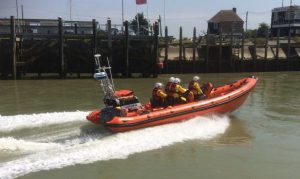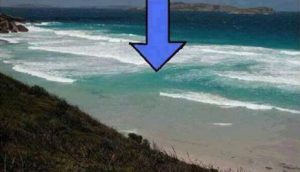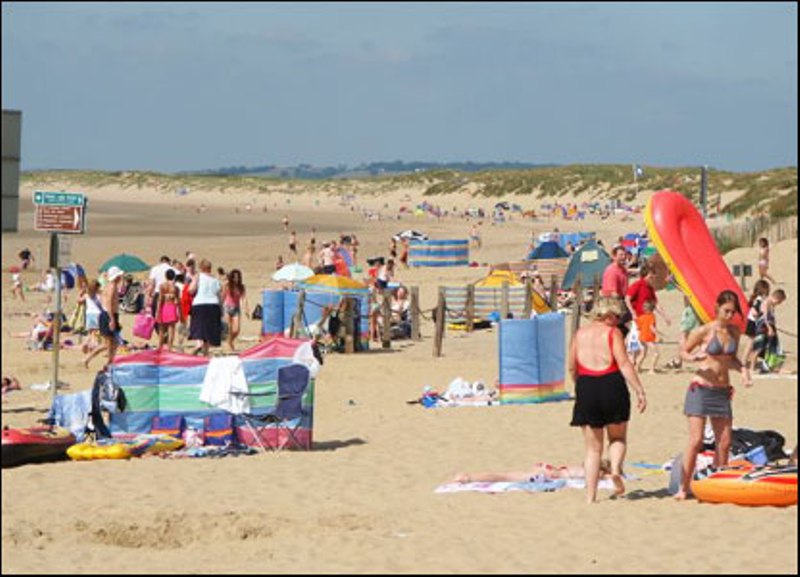Clear skies, a light breeze and, finally, hot summer temperatures attracted visitors by the thousand to Camber Sands on Sunday – a day for families to enjoy themselves beside the deceptively calm and inviting sea.

And deceptive it turned out to be. With the tide coming in, three people were caught in what is believed to have been a rip tide (or, more accurately, rip current) and had found themselves in difficulties. At 12:30pm the Coastguard, ambulance service and RNLI were notified and a search for the missing three began. One was quickly located and another, having been washed up, unconcious and not breathing, on the foreshore, was located by the Rye lifeboat crew and, with the aid of police and First Responders, resuscitated and taken by Coastguard helicopter to William Harvey hospital, where the first person to be rescued had also been taken. Lifeboats from Hastings and Littlestone had by now joined in the search for the third man, but without success and after several hours searching, all lifeboats were finally stood down at 4:20pm.

Sadly it had not been possible to locate the third man, a 19 year-old Brazilian man, Gustavo Silva Da Cruz, and at 6:20pm in the evening he was found washed up on the beach and police declared him dead at the scene. His family were informed and, through the medium of a crowd giving website, over £10,000 has been raised to have his body flown home to Brazil.
The Sands invariably look peaceful and inviting, however the tide comes in swiftly and there are slightly raised areas which can be quickly surrounded by water, forcing anyone caught there to paddle or swim to the shore. Equally, there are some channels and dips in the sand – sometimes several feet deep – which, when the whole area is covered by the incoming tide, become invisible and can catch out the unwary.

In this particular incident, it would appear that the men were caught in a rip tide or current. This is a phenomenon which can occur when the terrain over which an incoming tide is passing, confines an area of water rather than allowing it to spread out over the beach. Eventually water pressure builds up to a point where a ribbon of water turns and heads back out to sea against the incoming tide and creating a fast moving current. A swimmer caught in this will find himself being pushed out to sea and the natural reaction would be to swim against it towards the land. Unfortunately, the average swimmer may well be unable to make any headway against the current and in due course tiredness and panic will set in. The solution is to swim, not towards the shore, but parallel to it. The rip currents are often not very wide – sometimes just a few feet to a few yards – and by travelling across it, rather than against it, the swimmer will soon find himself out of the current and able to regain the beach. Sometimes, as the photograph shows, these rip currents can actually be seen moving against the general direction of the rest of the water.
There are no trained lifeguards on the beach although there is a beach patrol, funded by Rother, who along with Rob Kass, the hard working Coastguard and his small team, are there to give advice and land-based assistance. Last year, under Operation Radcott, there was also a three-man police presence, but this year that has been abandoned and there is now no permanent police presence of any sort in Camber. Interestingly, Rob Kass comments that in the past any problems have largely been on land rather than in the water, but the demographic of holiday makers is beginning to change with an increasing number of visitors originating from overseas, in countries where the opportunity to learn to swim is not available or considered necessary, thus demonstrating the importance of ensuring that all those coming on to the beach are aware of potential hazards and can enjoy this wonderful natural facility in safety.
Photos: RNLI, Carol Macdonald and library



